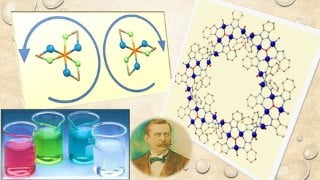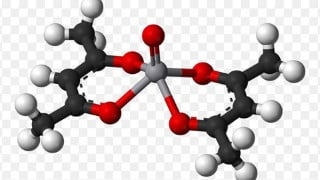Coordination Chemistry: Bonding, Structure & Properties
Learn the fundamentals of coordination compounds and their chemistry through the eyes of Alfred Werner. Explore topics such as isomerism, valence bond theory, crystal field theory, color properties, and enhanced stability. This course is designed for high school, undergraduate, and postgraduate students.
What you’ll learn
- Learn the ‘Fundamentals of Coordination Compounds’ and their Chemistry through the eyes of the founder- Alfred Werner
- Explore the ‘Basic concepts of Coordination Chemistry’, ‘Isomerism in Coordination Compounds’.
- Learn to apply the ideas of ‘Valence Bond Theory’ in understanding the ‘Bonding in Coordination Compounds’.
- Learn to apply the ideas of ‘Crystal Field Theory’ in understanding the ‘Bonding in Coordination Compounds’.
- Explore the ‘Color and other Properties of Coordination Compounds’ by applying the ‘Crystal Field Theory’.
- Explore the reasons for ‘Enhanced Stability of Coordination Compounds due to Chelation’.
This course on ‘Coordination Chemistry’ has been designed to help the students explore and understand the interesting nature of Bonding, Structure, and Properties of the Coordination Compounds. The lecture series in this course covers the highlighted topics in the following sequence:
(1) Werner’s theory of Coordination Compounds:
The topic beings with the introduction on Coordination compounds, differentiating their behavior from those of the Double salts. The subject content then further goes on to discuss the interesting ‘Historical background’ about how the early ideas of Coordination bonding were established by a genius scientist named Alfred Werner. This lecture also covers his inspirational scientific explorations on the coordination compounds, which were primarily based on his relatively simpler but highly thoughtful and systematic chemistry experimentations.
The various terms which form the vocabulary to the course are also introduced in this lecture.
(2) Isomerism in Coordination Compounds:
Various types of the Structural Isomerism and the Stereo Isomerism in coordination compounds have been discussed in this topic. Some interesting aspects arising in isomerism due to the formation of ‘Chelate’ structures in coordination compounds have also been explored.
(3) Chemical Bonding in Coordination Compounds – Valence Bond Theory:
The topic beings with the recall of the basic ideas of the Valence Bond Theory (VBT); highlighting further the theory’s application to explain the nature of Bonding and the Structure in simple covalent molecules. The similar idea is applied here to explain the nature of bonding and the structure of the coordination compounds. The primary concept of the ‘Hybridization of the valence shell orbitals’ of the central metal atom remains the core idea in the application of the VBT. Such an application of the VBT helps explaining the bonding, structure and few important properties of the coordination compounds. A variety of examples of the coordination compounds have been used during the discussions in this lecture.
There is also a discussion further on the ‘Limitations of VBT’ for its inability to explain some other important properties, like the color of coordination compounds.
(4) Chemical Bonding in Coordination Compounds – Crystal Field Theory:
The Crystal Field Theory (CFT) has been discussed as an idea which treats the bonding in coordination compounds of purely ‘electrostatic’ nature. The theory talks about the ‘Crystal field splitting’ of its metal – d orbitals in to two separate groups under the influence of the ligands, organizing in a specific geometry around the central metal atom. This consequently leads to the two sets of d-orbitals which are degenerate in terms of their energy. The magnitude of the d-orbital splitting (Crystal field splitting) determines the magnetic behavior, and the specific color property of the coordination compounds. The later topic specifically discusses the color property in a coordination compound as a consequence of the electronic transition between the two sets of the d-orbital.
The application of CFT has been discussed through a variety of examples of the coordination compounds.
(5) Color in Coordination Compounds – Application of Crystal Field Theory:
This topic discusses the typical color property of the coordination compounds as described in terms of Crystal field theory. The color property of a coordination compound is attributed to the ‘Crystal field splitting’ of its metal – d orbitals under the influence of the ligands, and the consequent ‘Electronic transition’ happening between these two sets of orbitals through the absorption and emission of specific amount of energy.
(6) Chelation and Stability in Coordination Compounds:
Through the suitable examples, this topic discusses the enhanced stability in ‘coordination compounds with the multidentate ligands’, arising due to the predominating ‘Entropic’ factor. A multidentate ligand in a coordination compound leads to the formation of the Chelate structure(s) (closed loop structures).
Who this course is for:
- Students at High School, Undergraduate, and Postgraduate levels.
- Students under 18 years of age should take the help of their parents or guardian in order to make a purchase of the course.
User Reviews
Be the first to review “Coordination Chemistry: Bonding, Structure & Properties”
You must be logged in to post a review.







There are no reviews yet.